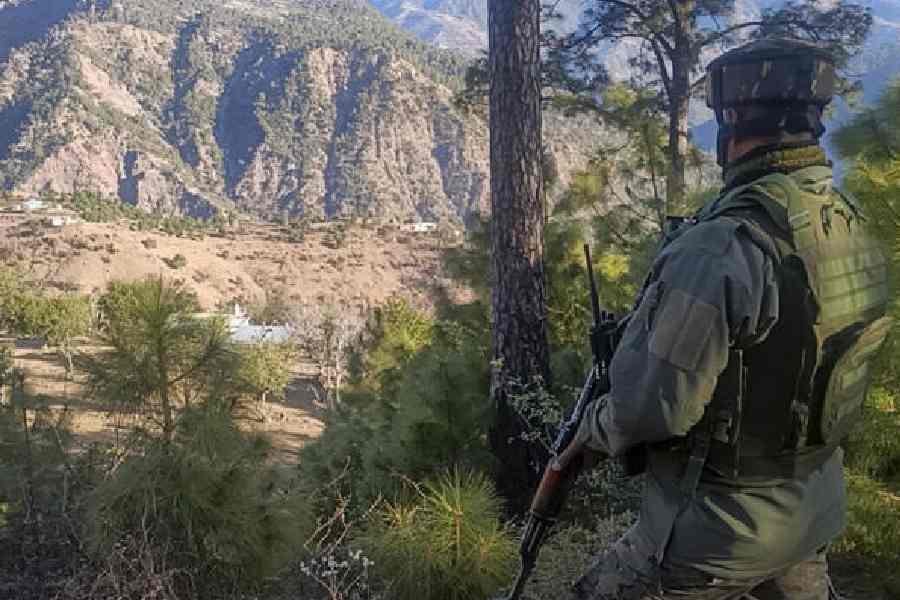|
|
Tapas Kanti Mitra’s solo exhibition, called appositely The Beauty of Water Colour (at Gallery Katayun, till April 16), included the artist’s recent works in the medium. Primarily a landscape painter, Mitra has always been delivered his works with consummate skill. His understanding of texture, colour, the interplay of light and shadow, the dialogue between the visible and the invisible, is intuitive, and, as Mrinal Ghosh points out in the catalogue, mystical. Even more crucially, the image of reality that he holds in his mind is executed perfectly. This perfection goes beyond an astonishing ability to imitate reality with photographic fidelity. Mitra transcends this mimetic foundation of realist traditions with his ability to transform the natural into the supernatural.
This vertiginous quality in Mitra’s work, the unveiling of the film of familiarity from mundane reality, harks back to an earlier Romantic tradition of representation. The haunting landscapes of Turner, where sharply defined colours blur into indeterminate hues, stand behind some of Mitra’s works, particularly the scenes framed by rivers and seas. One of the finest paintings on display — a dog chasing some birds on a sea beach — is a distinct allusion to Turner’s Dawn after the Wreck. Mitra’s version departs from the original in the way the vast emptiness of the shore on the morning after a devastating shipwreck becomes peopled, first by the waves, and then by the shadowy birds pursued by the solitary dog. The abysmal blur in Turner’s work, the point where the earth and the sea fade into each other in a blinding white blur, is present vestigially in Mitra’s work. The howling dog, with its face upturned, probably mourning for its drowned master, is replaced by a more feisty creature, absorbed in its own little game.
On Mitra’s canvases human beings become rarefied, melting entities against the dusty, greying cityscapes. The city streets, busy or still, teem with crows, their presence as inscrutable and suspenseful as the birds in Hitchcock’s unforgettable film. The blackness of the crows is defined with respect to the dark alleys, the pallid silhouettes, and the masterly use of the vanishing point ending either in dazzling whiteness or in mysterious black holes. Light becomes blinding, darkness visible (picture).
Mitra’s sophisticated use of light and shade, his capacity to invoke presences out of nothingness, relates him to an indigenous tradition as well, the line of naturalist painting that developed through Tagore, Ramkin- kar Baij and Benodebehari Mukhopadhyay.











